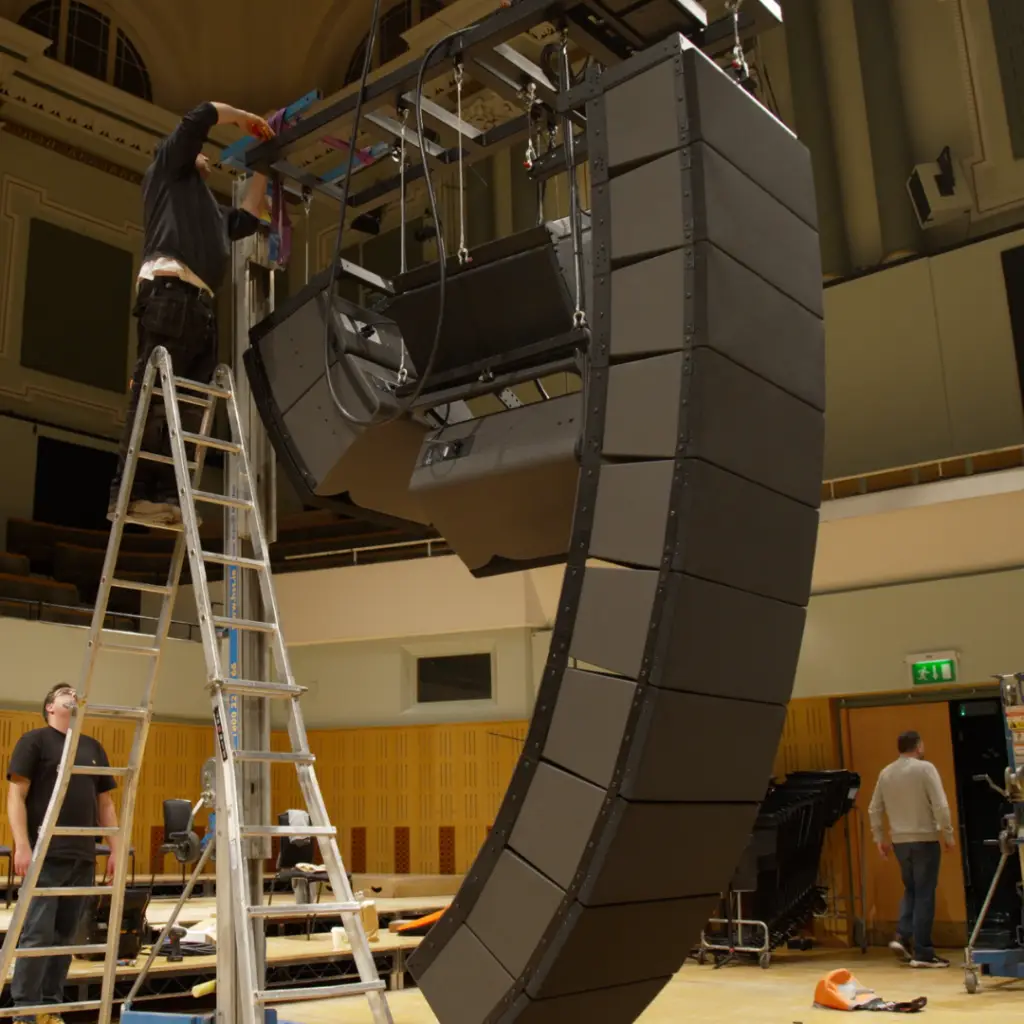Current technological trends in AV design for theatres who require rapid performance type switching.
In the dynamic world of theatre, where venues must seamlessly transition between varied performance types—such as spoken word, concerts, live rock, and musical theatre—the integration of advanced audio-visual (AV) systems is pivotal. These systems not only enhance the audience experience but also ensure efficiency and flexibility in production setups. Here’s a look at the current technological trends driving the evolution of AV system design for such multipurpose theatres, highlighting equipment and systems from leading manufacturers, including a focus on L-Acoustics.
Digital mixing consoles and networked audio systems for theatres and concert halls.
Digital mixing consoles from manufacturers such as Yamaha, DiGiCo, and Allen & Heath have revolutionized audio management in theatres. Consoles like the Yamaha CL Series and DiGiCo SD Series offer flexibility through scene memory, allowing engineers to save and recall settings for different performance types. Networked audio systems, such as Dante from Audinate and AVB, facilitate seamless audio signal distribution across the venue. These systems reduce the need for extensive cabling and enable easy reconfiguration based on the performance type.
Advanced speaker array technology for theatres.
L-Acoustics leads the field with its K and A Series line array speakers, renowned for their superior sound quality and precise control over sound dispersion. The L-Acoustics K2 and A15 arrays are particularly suited for theatres requiring adaptability, ensuring consistent audio quality regardless of the audience’s location. Other notable manufacturers include Meyer Sound with its LEO and LINA line arrays and D&B Audiotechnik’s Y and V Series, which also provide high-performance solutions for varied acoustic needs.
High-Definition video projection and LED walls.
The visual aspect of performances has seen significant advancements with the adoption of high-definition video projection and LED walls from companies like Barco, Christie, and ROE Visual. LED walls, such as ROE Visual’s Black Pearl series, offer vibrant, high-contrast visuals that can be easily adjusted to fit different stage designs and themes. Projection mapping technology from Christie and Barco is also being used to transform physical surfaces into dynamic video displays, enhancing the immersive experience of performances.
Automated lighting systems for theatres.
Automated and intelligent lighting systems from manufacturers like ETC, Martin by Harman, and Robe provide unmatched flexibility and energy efficiency. ETC’s Source Four LED fixtures and Martin’s MAC Viper moving lights can be pre-programmed with various lighting scenes, instantly matching the mood and aesthetic of different performances. Robe’s BMFL range adds a dynamic element, essential for genres like rock concerts and musical theatre.
Integrated professional AV control systems.
Modern theatres benefit from integrated control systems from Crestron, AMX, and Q-SYS that unify the management of audio, lighting, and video components. Crestron’s control systems, for example, allow for centralized control through touchscreens or tablets, enabling quick transitions between setups for different performance types. This integration reduces the complexity of operating multiple systems and streamlines the workflow for technical staff.
Acoustic treatment and variable acoustics for concert halls and theatres.
Acoustic flexibility is crucial in multipurpose venues. L-Acoustics’ L-ISA Immersive Hyperreal Sound technology allows for detailed spatial audio, enhancing the auditory experience. Variable acoustic systems from Meyer Sound, such as the Constellation system, use adjustable panels and electronic acoustic enhancement to modify the acoustic properties of the space. This ensures optimal sound quality for both spoken word performances, which require clarity, and concerts, which benefit from richer acoustics.
Wireless Technology for theatre AV systems.
Wireless microphones and in-ear monitoring systems from Shure and Sennheiser are essential for contemporary theatre productions. Shure’s Axient Digital and Sennheiser’s Digital 6000 systems provide performers with the freedom to move without being tethered by cables, which is particularly important for dynamic performances like live rock and musical theatre. Advances in wireless technology have also improved signal reliability and audio quality, even in challenging RF environments.
Interactive and augmented reality (AR) tech for theatres.
The incorporation of interactive and augmented reality technologies from companies like Disguise and BlackTrax enhances audience engagement. Disguise’s media servers enable complex visual effects and AR experiences, transforming traditional performances into multi-sensory events. BlackTrax’s real-time tracking systems are especially appealing for innovative theatre productions seeking to push the boundaries of conventional storytelling.
Remote production and streaming tech.
In response to the growing demand for accessibility, many theatres are investing in remote production and live streaming capabilities from manufacturers such as Blackmagic Design and NewTek. High-quality cameras, streaming encoders, and reliable internet connections allow performances to be broadcast to remote audiences. This trend not only expands the reach of the theatre but also provides additional revenue streams through virtual ticket sales.
Sustainable AV technology for theatres and concert halls.
Sustainability is becoming a key consideration in AV system design. Energy-efficient LED lighting from ETC, low-power audio amplifiers from Lab Gruppen, and environmentally friendly materials are being integrated into theatre designs. These sustainable practices not only reduce the environmental impact but also lower operating costs in the long term.
Conclusion.
The rapid evolution of audio-visual technologies, spearheaded by leading manufacturers like L-Acoustics, Yamaha, Meyer Sound, and others, is empowering theatres to offer versatile and immersive experiences across a variety of performance types. By embracing these current trends, venues can ensure they meet the diverse needs of their audiences while maintaining efficiency and adaptability in their operations. As technology continues to advance, the possibilities for enhancing live performance experiences will only expand, promising an exciting future for theatre productions.

Chris Kmiec
A self confessed AV nerd, Chris is a graduate of Surrey University and has over 15 years experience with commercial AV design for venues of all types in every corner of the world.



